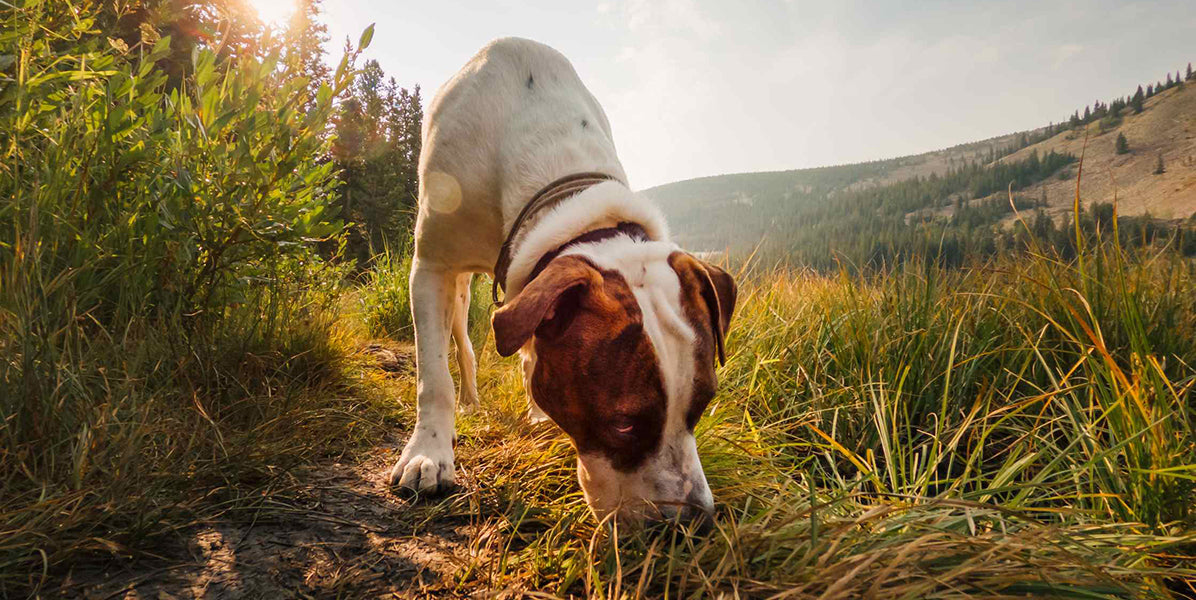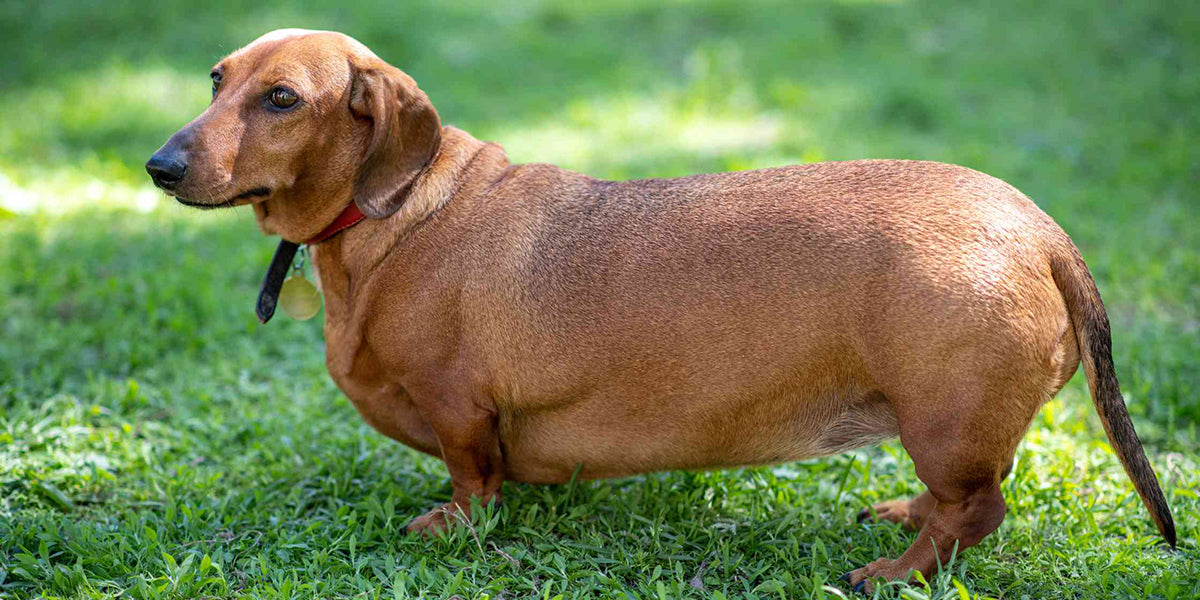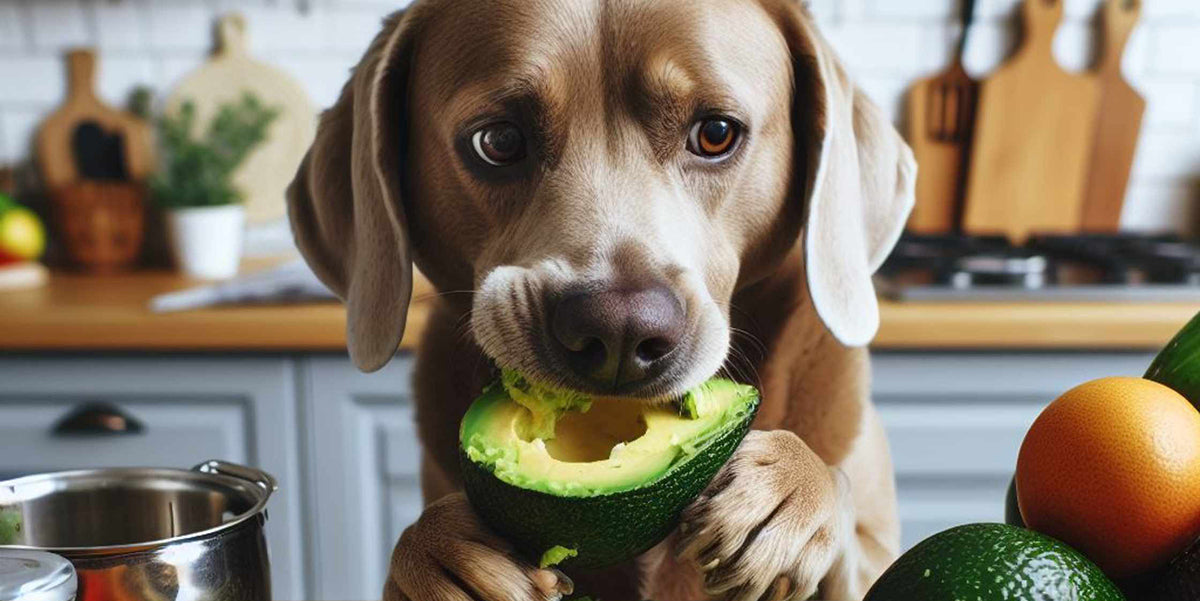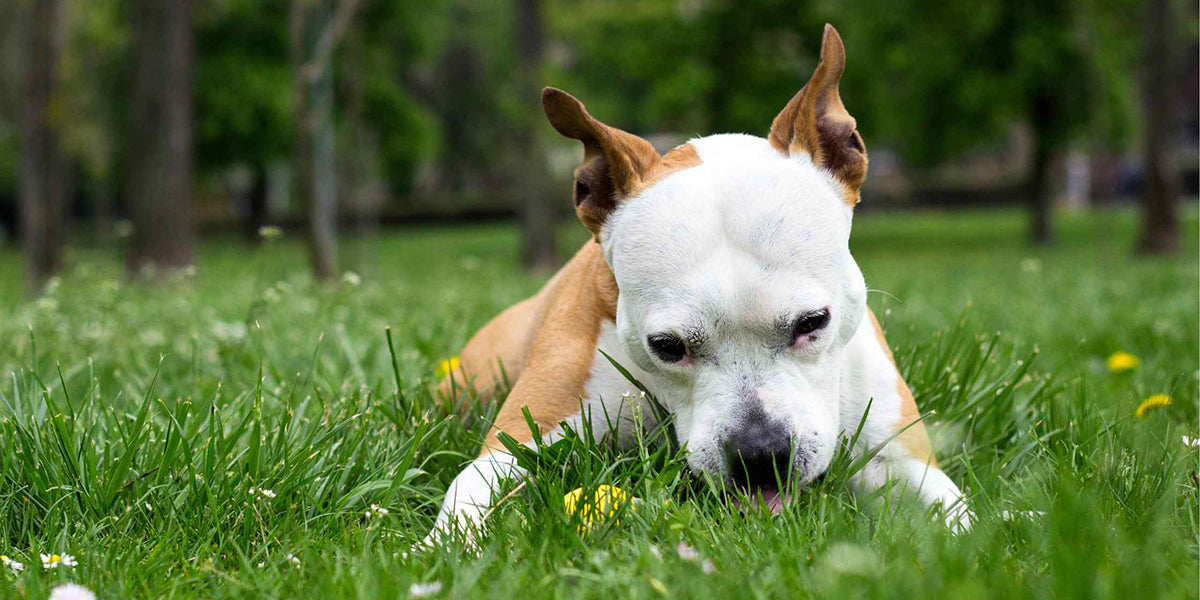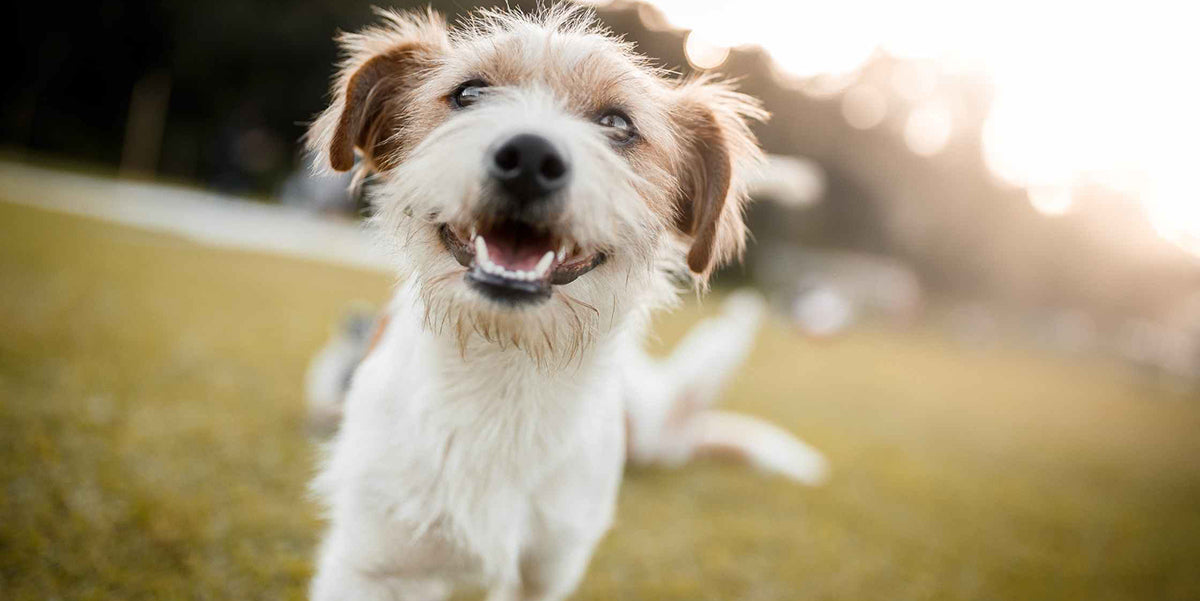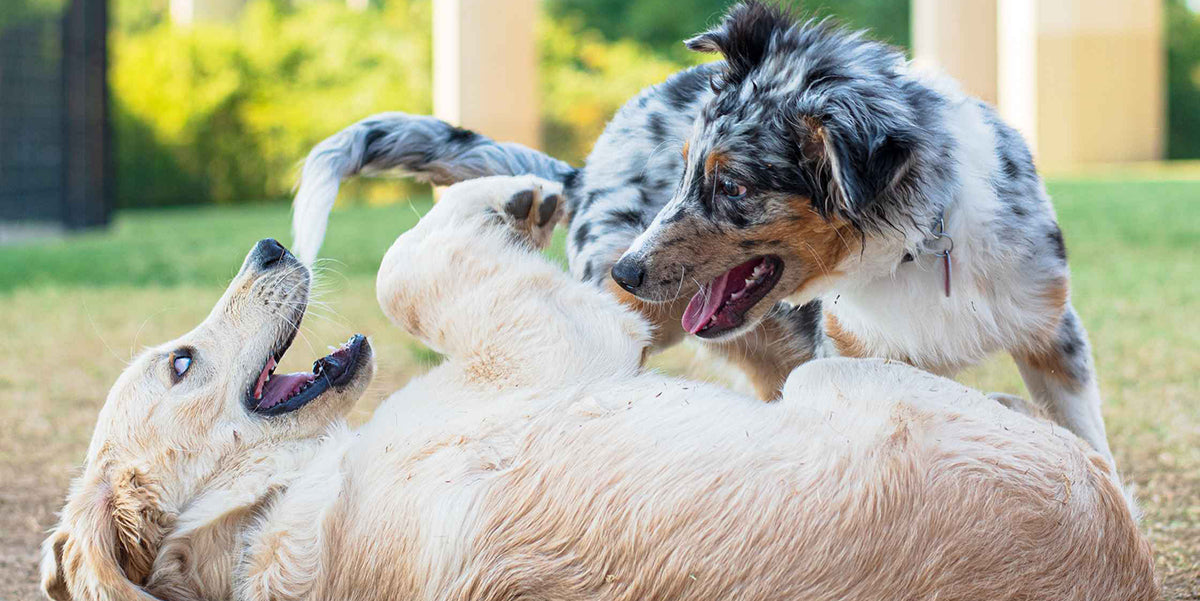Recognising Signs of a Healthy Dog - At PetWell, our primary focus is enhancing the well-being of your beloved pets and shedding light on the early detection of health issues, by offering effective solutions.
Today, we shift our attention to decoding the signs of a healthy dog and exploring how to maintain their excellent health.
Understanding the signs of a healthy dog is crucial for recognising when everything is running smoothly and when a potential issue might be brewing.
Recognising the Signs of a Healthy Dog
Let’s delve into the tell-tale signs that indicate your dog's well-being. By the end, you'll have a comprehensive understanding of what it means to have a truly healthy dog and what you need to do to keep them healthy and happy.
Shiny Coat and Clear Eyes

One of the most obvious signs of a healthy dog is a coat that gleams with health. A shiny, lustrous coat is not only aesthetically pleasing but also signifies that your dog's diet and grooming routine are on point.
In addition to a radiant coat, your dog should have bright, clear eyes. Dull, watery, or bloodshot eyes can indicate an underlying health problem.
How to maintain a shiny coat and clear eyes:
Balanced Diet with Omega-3 Fatty Acids
Omega-3 fatty acids, found in fish, high-quality treats and supplements contribute to a lustrous coat and healthy eyes. These essential nutrients support skin health and reduce eye dryness.
Try: PetWell freeze dried sardines, salmon or green-lipped mussels or PetWell THRIVE supplement and functional treats
Read more about Creating a Balanced Diet for Your Dog
Regular Grooming and Brushing
Consistent grooming and brushing help distribute natural oils throughout your dog's coat, keeping it shiny and reducing skin dryness.
Additionally, grooming sessions provide an opportunity to spot any skin or eye issues early.
Annual Eye Check-ups
Schedule yearly eye check-ups with your veterinarian to monitor your dog's eye health. Early detection of eye conditions can prevent potential problems from becoming more severe.
Optimal Body Weight
Maintaining a healthy weight is an important factor in your dog's well-being. Feel along your dog's ribcage – you should be able to feel the ribs without them being visible.
An ideal weight contributes to joint health, mobility, and overall vitality. Signs of a healthy dog often include an optimal body condition.
How to maintain optimal body weight:
Portion Control
Control your dog's portion sizes to prevent overfeeding and monitor their daily calorie intake. Consult a pet nutritionist if you need guidance on the appropriate portion sizes for your dog's breed and size.
Regular Exercise
Incorporate daily exercise and playtime to help your dog maintain an ideal weight. Physical activity keeps them fit and reduces the risk of obesity-related health issues.
Joint Supplements for Dogs
Incorporate joint-supporting supplements and functional treats like PetWell's MOBILITY Hip + Joint Relief. These products combine a variety of anti-inflammatory ingredients that work in synergy to promote optimum joint health
Read more about Creating a Balanced Diet for Your Dog
Energetic and Playful Behaviour

A dog's zest for life is a clear indicator of their health. Signs of a healthy dog include boundless energy and enthusiasm for play and exercise. If your dog is excited and eager to explore, it's a good sign that they're feeling their best.
How to maintain energy and playfulness:
Daily Exercise and Playtime
Engage your dog in daily physical and mental exercise. Regular walks, play sessions, and activities like fetch or agility training keep them mentally and physically stimulated.
Stimulating Toys and Puzzles
Offer toys and puzzles that challenge your dog's problem-solving skills and keep them mentally engaged. This prevents boredom and helps maintain their playful behaviour.
Read more about Preventing Boredom in Dogs
Consistent Routine
Dogs thrive on routine. Maintain a consistent daily schedule for feeding, exercise, and sleep to reduce stress and anxiety, contributing to a happy and playful disposition.
Good Appetite and Digestive Health
Healthy dogs have healthy appetites. An enthusiastic eater with a good appetite is usually a positive sign of well-being. Similarly, a well-functioning digestive system ensures your dog is absorbing essential nutrients.
Regular, consistent bowel movements are an indication of digestive health and are among the clear signs of a healthy dog.
How to maintain a good appetite and digestive health:
High-Quality Dog Food
Select high-quality dog food that meets your dog's specific dietary needs, providing the essential nutrients for a healthy appetite and digestive system.
Avoid Toxic Food
Refrain from feeding your dog foods that are toxic to them such as grapes and raisins.
Here is a list of toxic foods for dogs.
Supplements for Dogs
Incorporate PetWell's DIGEST supplement and functional treats as they have all-natural ingredients and probiotics that work together to provide optimal gut health.
More Tips for Maintaining a Healthy Digestive System in Dogs
Strong and Well-Maintained Teeth

Oral health is a crucial part of your dog's overall well-being. Strong and clean teeth indicate a dog is in good health. Regular dental check-ups and cleanings can help maintain those pearly whites and contribute to the overall health of your dog.
How to maintain dental health:
Regular Dental Care
Brush your dog's teeth regularly with canine toothpaste to prevent plaque and tartar build-up, maintaining strong teeth and healthy gums.
Dental Toys
Provide toys designed to help clean your dog's teeth naturally. These can be a fun and effective way to support dental health.
Professional Dental Cleanings
Engage in professional dental cleaning services. These cleanings help address any advanced dental issues and maintain oral health.
Read more about Preventing Canine Dental Disease
Normal Vital Signs
Regularly monitoring your dog's vital signs, such as heart rate and body temperature, can be a helpful practice. Knowing your dog's baseline vitals can be essential in recognising deviations that might signal health issues.
Here are some tips on what to check for and how to do it:
1. Temperature
What to Check: A dog's normal body temperature ranges between 37.5°C to 39°C
How to Check: Use a digital rectal thermometer, lubricated with a bit of petroleum jelly. Gently insert it into your dog's rectum about an inch, and hold it in place for about a minute. Be cautious and don't insert it too far.
2. Heart Rate
What to Check: A dog's normal heart rate depends on their size, but it generally ranges from 70 to 120 beats per minute.
How to Check: Place your hand over your dog's left side, behind their front leg. You can feel their heart beating. Use a timer to count the beats for 15 seconds and then multiply by four to get beats per minute.
3. Respiratory Rate
What to Check: A dog's normal respiratory rate is typically 10 to 30 breaths per minute.
How to Check: Watch your dog's chest rise and fall as they breathe. Count the number of breaths in one minute.
A healthy dog is a happy dog, and your efforts to decode the signs of their well-being contribute to longevity. |
4. Mucous Membranes (gums):
What to Check: Healthy mucous membranes are pink and moist. Pale, blue, or yellowish gums can indicate health issues.
How to Check: Lift your dog's lip and examine their gums. Press a finger against the gum to check capillary refill time – it should be less than 2 seconds.
6. Hydration
What to Check: Pinch a bit of skin on your dog's back or neck. It should spring back immediately. If it remains tented, your dog might be dehydrated.
How to Check: Gently pinch your dog's skin and release. Observe how quickly it returns to its normal position.
It's important to establish your dog's baseline vitals when they are healthy, as individual dogs can have variations. Regularly check these vital signs when your dog is calm and relaxed.
If you notice any significant deviations from their normal baseline or signs of distress, contact your veterinarian. Monitoring your dog's vitals is a valuable tool for early detection of health issues and can help ensure your pet's well-being.
Vibrant Skin and Healthy Paws
The skin and paws of your dog are also significant indicators of their health. Healthy skin should be free of irritation, redness, or unusual lumps. Paws should be clean, with well-maintained nails, and free from cuts or abrasions.
How to maintain vibrant skin and healthy paws:
Skin Care
Keep your dog's skin clean and dry. Address any skin issues or irritations promptly. Use dog-specific shampoos and consult your vet for skin problems.
Paw Maintenance
Regularly trim and maintain your dog's nails to prevent overgrowth, which can lead to discomfort and potential injuries.
Paw Protection
Protect your dog's paws during extreme weather conditions or when walking on rough terrains. Consider dog boots to shield their paws from hot pavement or sharp objects.
Read for more Top Tips to Keep Your Dog Healthy
In Summary
Recognising the signs of a healthy dog is a vital skill for every dog owner. It empowers you to take proactive steps in maintaining your dog’s well-being. Schedule regular vet check-ups so they can help you navigate any potential health concerns.
Disclaimer
The entire contents of this email and website are not to be taken as medical advice. PetWell encourages you to make your own pet healthcare decisions based on your research and in partnership with a qualified pet healthcare professional.













